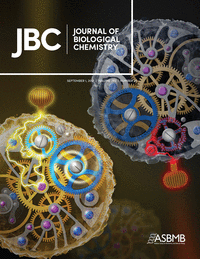 Researchers in Australia have withdrawn a 2006 paper in The Journal of Biological Chemistry (JBC), citing image duplication.
Researchers in Australia have withdrawn a 2006 paper in The Journal of Biological Chemistry (JBC), citing image duplication.
In the withdrawal notice, published July 14, 2017, the authors claim that the “errors do not impact the underlying scientific findings of the article.”
Although the notice does not mention an investigation, a comment on PubPeer on March 2017—signed by Mark Hargreaves, the vice-chancellor at the University of Melbourne—indicates that the university conducted an investigation to assess the issues in the paper and determined that research misconduct “did not occur.”
Here’s the withdrawal notice for “Induction of the unfolded protein response in familial amyotrophic lateral sclerosis and association of protein-disulfide isomerase with superoxide dismutase 1:”
This article has been withdrawn by the authors. The authors have become aware of several errors in the way images were presented in this manuscript and withdraw the article in the interests of maintaining their publication standards and those of the journal. The authors state that these presentational errors do not impact the underlying scientific findings of the article, which have been confirmed in other laboratories. The authors stand by the original scientific results as described. The authors state the following: while all actin blots were performed as described in the article and confirmed similar loading in each case, a portion of the actin immunoblot image from rat lysates in Fig. 2A was inadvertently reused in the mouse lysate panel images in Fig. 2A, in Fig. 2D, and in Fig. 8A. Due to their strong similarity, lanes 2 and 9of the PDI immunoblot and lanes 7 and 9 of the SOD immunoblot in Fig. 3B were accidentally duplicated. Similarly, in Fig. 3C, lanes 1 and 9 of the PDI immunoblot and lanes 3 and 9 of the SOD immunoblot were accidentally duplicated. However, all mutants described in the article were included in the study, and the findings obtained were as reported. In Fig. 3C, because the same set of COS cell lysates were used in both studies, lanes 3–6 of the SOD1 immunoblot was published previously (Turner, B. J., Atkin, J. D., Farg, M. A., Zang, D. W., Rembach, A., Lopes, E. C., Patch, J. D., Hill, A. F., and Cheema, S. S. (2005) Impaired extracellular secretion of mutant superoxide dismutase 1 associates with neurotoxicity in familial amyotrophic lateral sclerosis. J. Neurosci. 25, 108–117), and hence the expression of SOD1 in these lysates was equivalent for both publications. Therefore, while the presentation of some of the images in the paper is incorrect, the images fully represent the scientific findings of the study as reported. The original paper can be obtained by contacting the authors.
The paper has been cited 195 times, according to Clarivate Analytics’ Web of Science, including once by the notice.
The 2005 Journal of Neuroscience paper, “Impaired Extracellular Secretion of Mutant Superoxide Dismutase 1 Associates with Neurotoxicity in Familial Amyotrophic Lateral Sclerosis,” mentioned in the notice has been cited 116 times.
The Journal of Neuroscience paper and the 2006 JBC paper both explored mutations and possible drug targets associated with amyotrophic lateral sclerosis, also commonly known as Lou Gehrig’s disease. And both papers were questioned on PubPeer in December 2014 (1, 2).
In March 2017, a PubPeer commenter—who signed off as Mark Hargreaves—explained:
I have been advised of a post on your website:
I am contacting you to inform you that The University of Melbourne investigated the allegations made, including examination of original research records, and concluded that research misconduct by falsification or fabrication, as defined in the Australian Code for the Responsible Conduct of Research and the University’s Code of Conduct for Research, did not occur. We are satisfied that the experiments reported in the journal did occur and that the findings and conclusions reported in the journal article are accurate.
The last author on the JBC paper, Malcolm Horne, declined to comment. Horne, who works at the Florey Institute, which is part of the University of Melbourne, was not a co-author on 2005 Journal of Neuroscience paper.
We contacted Hargreaves several times to confirm that he wrote the post on PubPeer and to ask about the investigation. We also contacted Julie Atkin, corresponding author on the JBC paper and second author on the 2005 Journal of Neuroscience paper, as well as Bradley Turner, corresponding author on the Journal of Neuroscience paper and second author on the JBC paper. Neither has responded.
Two other papers by Horne and Atkin, who works at Macquarie University in Sydney, have been questioned on PubPeer—a 2008 paper in Neurobiology of Disease and a 2012 paper in Neurobiology of Aging.
Like Retraction Watch? Consider making a tax-deductible contribution to support our growth. You can also follow us on Twitter, like us on Facebook, add us to your RSS reader, sign up on our homepage for an email every time there’s a new post, or subscribe to our daily digest. Click here to review our Comments Policy. For a sneak peek at what we’re working on, click here.
This is not my field. Can someone please tell me, how easy it is to reuse and duplicate blots by accident? Aren’t there procedures in place to prevent this?
Also, a correction to another paper, HMG 2015 24, 3830-3846, was published:
Defects in optineurin- and myosin VI-mediated cellular trafficking in amyotrophic lateral sclerosis. Sundaramoorthy V et al. Hum Mol Genet. 2017 Sep 1;26(17):3452. PMID: 28854706
It seems the wrong actin blots were included, and one of the other blots was accidentally inserted upside down.